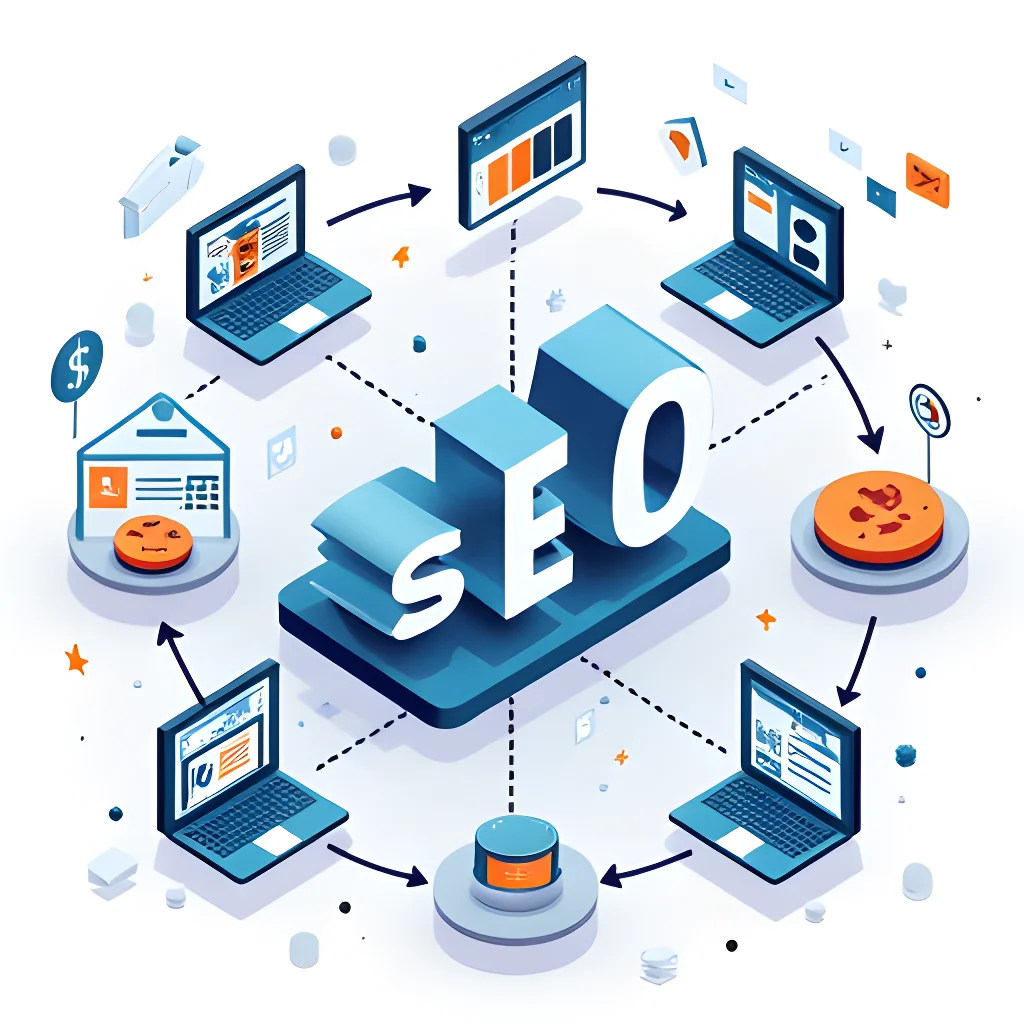Now Reading: 7 Effective E-commerce SEO Strategies for Beginners
-
01
7 Effective E-commerce SEO Strategies for Beginners
7 Effective E-commerce SEO Strategies for Beginners

Starting an online store is exciting, but without visibility, even the best products won’t sell. That’s where effective e-commerce SEO strategies for beginners come in. I’ve helped dozens of new store owners transform their traffic and sales through simple optimization techniques. In this guide, I’ll share exactly how you can make search engines fall in love with your store-no technical expertise required.
Key Takeaways:
What are the best SEO strategies for e-commerce beginners?
- Conduct thorough keyword research focusing on product-specific and long-tail keywords
- Optimize product pages with unique descriptions, high-quality images, and customer reviews
- Create a user-friendly site structure with clear navigation and internal linking
- Implement technical SEO basics including mobile optimization and fast loading speeds
- Build content marketing around your products with blogs and guides
- Use schema markup to enhance your product listings in search results
- Collect and showcase customer reviews to build trust and improve rankings
Understanding E-commerce SEO Fundamentals
E-commerce SEO is different from regular SEO. While both aim to improve visibility in search engines, e-commerce SEO specifically focuses on optimizing product pages, category pages, and the overall shopping experience. As an online store owner, I need to understand that my customers are typically searching with buying intent, not just looking for information.
The goal of effective e-commerce SEO strategies for beginners is to make your products visible to potential customers at the exact moment they’re ready to buy. This means targeting keywords that show purchase intent and creating content that answers product-specific questions.
Why e-commerce SEO matters:
- 35% of product searches start on Google rather than on Amazon or other marketplaces
- The top 3 search results get approximately 75% of all clicks
- E-commerce sites with strong SEO can reduce their reliance on paid advertising
For beginners, the most important thing to understand is that e-commerce SEO is a long-term strategy. While paid ads can drive immediate traffic, organic search traffic builds over time and continues to deliver results without ongoing costs.
Useful Articles:
Keyword Research: The Foundation Of E-commerce SEO
Every successful e-commerce SEO strategy starts with keyword research. This process helps me identify the exact terms potential customers use when searching for products like mine.
How to conduct e-commerce keyword research
I start by brainstorming an initial list of keywords related to my products. For example, if I sell pet supplies, my initial list might include:
- dog food
- cat toys
- pet supplies
- dog beds
Next, I expand this list using keyword research tools. Google Keyword Planner is free and provides good insights, while tools like Ahrefs or SEMrush offer more detailed data.
When researching keywords for e-commerce, I focus on:
Commercial keywords that show buying intent, such as:
- buy dog food online
- best cat toys
- affordable pet supplies
Long-tail keywords that are more specific but often have higher conversion rates:
- hypoallergenic dog food for puppies
- interactive cat toys for indoor cats
- durable dog beds for large breeds
Analyzing competitor keywords
I also research what keywords my competitors are ranking for. This helps me discover keyword opportunities they might be missing. By analyzing the top-ranking e-commerce sites in my niche, I can identify gaps in their keyword strategy and target those terms.
For example, if competitors are focusing on generic terms like “dog food” but missing specific terms like “grain-free dog food for senior dogs,” I can create optimized content for these more specific searches.
On-Page SEO For Product Pages
Product pages are the heart of any e-commerce site. Optimizing these pages correctly can significantly impact search rankings and conversion rates.
Crafting compelling product titles
I always include my main keyword in the product title, placing it as close to the beginning as possible. For example, instead of “Blue Cotton T-Shirt for Men,” I might use “Men’s Blue Cotton T-Shirt – Comfortable Fit.”
Product titles should be:
- 60-70 characters long
- Include the primary keyword
- Be descriptive and compelling
- Include unique selling points when possible
Writing unique product descriptions
Generic manufacturer descriptions won’t help my SEO. Instead, I create unique, detailed descriptions for each product that naturally incorporate relevant keywords.
Effective product descriptions:
- Address customer pain points and questions
- Include primary and secondary keywords naturally
- Use bullet points to highlight key features
- Are at least 300 words long for important products
Optimizing product images
Images play a crucial role in e-commerce SEO. I always:
- Use descriptive, keyword-rich file names (e.g., “mens-blue-cotton-tshirt.jpg” instead of “IMG12345.jpg”)
- Add alt text that describes the image and includes relevant keywords
- Compress images to ensure fast loading times
- Include multiple high-quality images showing the product from different angles
Implementing schema markup
Schema markup helps search engines understand my product information better, which can lead to rich snippets in search results. For e-commerce, I implement:
- Product schema that includes price, availability, and ratings
- Review schema to display star ratings in search results
- Brand schema to enhance brand visibility
These rich snippets make my listings stand out in search results and can significantly improve click-through rates.
Useful Articles:
Site Structure And Navigation
A well-organized site structure helps both users and search engines navigate my store efficiently. This improves user experience and helps search engines index my pages more effectively.
Creating a logical category hierarchy
I organize my products into logical categories and subcategories. For example:
Home
├── Men's Clothing
│ ├── T-Shirts
│ ├── Jeans
│ └── Sweaters
├── Women's Clothing
│ ├── Dresses
│ ├── Tops
│ └── Skirts
└── Accessories
├── Bags
├── Jewelry
└── ScarvesThis hierarchical structure makes it easy for customers to find what they’re looking for and helps search engines understand the relationship between different pages.
Optimizing URLs
I keep my URLs short, descriptive, and keyword-rich. For example:
- Good: yourdomain.com/mens-clothing/blue-cotton-tshirt
- Bad: yourdomain.com/product?id=12345
I always use hyphens to separate words and include relevant keywords in the URL.
Internal linking strategy
Internal linking helps distribute link equity throughout my site and guides users to related products. I implement:
- Related product sections on product pages
- “Customers also bought” recommendations
- Links from blog content to relevant product pages
- Breadcrumb navigation to show the user’s location within the site hierarchy
These internal links create pathways for both users and search engines to discover more of my products.
Technical SEO Essentials
Technical SEO ensures that search engines can properly crawl and index my e-commerce site. While it might sound intimidating for beginners, there are several key aspects that are essential to address.
Mobile optimization
With over 60% of searches now coming from mobile devices, having a mobile-friendly store is crucial. I ensure:
- My site uses responsive design that adapts to all screen sizes
- Buttons and links are large enough to tap on mobile
- Product images are viewable on small screens
- Checkout process works smoothly on mobile devices
Google’s Mobile-Friendly Test tool helps me verify that my site works well on mobile devices.
Site speed optimization
Slow-loading pages frustrate customers and hurt SEO rankings. To improve site speed, I:
- Compress all images before uploading
- Minimize the use of large JavaScript files
- Use browser caching
- Consider using a Content Delivery Network (CDN)
Tools like Google PageSpeed Insights help identify specific issues that are slowing down my site.
Handling duplicate content
E-commerce sites often struggle with duplicate content issues, especially with product variations. To address this, I:
- Use canonical tags to indicate the preferred version of a page
- Implement unique descriptions for similar products
- Create unique title tags for each page
- Use robots.txt to prevent indexing of duplicate pages like sorting and filtering URLs
Useful Articles:
Content Marketing For E-commerce
Content marketing helps me attract potential customers at different stages of the buying journey. By creating valuable content related to my products, I can rank for informational keywords and build trust with potential customers.
Creating a blog strategy
I develop blog content that addresses common questions and concerns related to my products. For example, if I sell kitchen appliances, I might create articles like:
- “How to Choose the Right Blender for Your Needs”
- “10 Healthy Smoothie Recipes for Your New Blender”
- “Blender vs. Food Processor: Which One Do You Need?”
These articles target informational keywords that potential customers might search for before making a purchase decision.
Developing buying guides
Comprehensive buying guides help customers make informed decisions while targeting valuable keywords. These guides:
- Compare different product types and features
- Explain what factors to consider when buying
- Include internal links to relevant product categories
- Target long-tail keywords with buying intent
Creating product videos
Video content can significantly improve engagement and conversion rates. I create:
- Product demonstration videos
- How-to guides related to my products
- Comparison videos between different models
- Customer testimonial videos
These videos can be embedded on product pages and uploaded to YouTube with optimized titles, descriptions, and tags to improve visibility.
Building Trust And Authority
Trust signals are crucial for e-commerce SEO success. Search engines want to recommend trustworthy stores to their users.
Collecting and displaying customer reviews
Reviews provide fresh, unique content and build trust with potential customers. I actively:
- Encourage customers to leave reviews after purchase
- Respond to all reviews, both positive and negative
- Implement review schema markup to display star ratings in search results
- Feature reviews prominently on product pages
Creating detailed About and Contact pages
Transparency builds trust with both customers and search engines. My About and Contact pages include:
- Company history and mission
- Team information
- Physical address (if applicable)
- Multiple contact methods
- Business credentials and certifications
Securing your site with HTTPS
Security is non-negotiable for e-commerce. I ensure my site uses HTTPS encryption, which:
- Protects customer information
- Is a ranking factor for Google
- Builds trust with security-conscious shoppers
- Is indicated by the padlock icon in browsers
Local SEO For E-commerce
If my e-commerce business has a physical location or serves specific geographic areas, local SEO can help me attract nearby customers.
Google Business Profile optimization
I claim and optimize my Google Business Profile by:
- Verifying my business
- Adding accurate business information
- Uploading high-quality photos
- Encouraging and responding to reviews
- Adding products to my profile
Local keyword targeting
I incorporate location-based keywords into my content, such as:
- “pet supplies in [city]”
- “buy dog food in [neighborhood]”
- “[city] pet store delivery”
These location-specific keywords help me rank for local searches with high purchase intent.
Measuring And Improving SEO Performance
To continually improve my e-commerce SEO, I need to track key metrics and make data-driven decisions.
Essential SEO metrics to track
I regularly monitor:
- Organic traffic to product and category pages
- Keyword rankings for target terms
- Conversion rate from organic search
- Bounce rate and time on page
- Page load speed
- Mobile usability issues
Using Google Analytics and Search Console
These free tools provide valuable insights into my SEO performance:
- Google Analytics shows how users interact with my site
- Search Console reveals which keywords are driving traffic
- Both tools help identify technical issues that need fixing
Regular SEO audits
I conduct quarterly SEO audits to identify:
- Technical issues that need fixing
- Content that needs updating
- New keyword opportunities
- Underperforming pages that need optimization
By regularly reviewing and adjusting my strategy, I ensure my e-commerce SEO continues to improve over time.
Advanced E-commerce SEO Strategies
Once I’ve mastered the basics, these advanced strategies can take my e-commerce SEO to the next level.
Voice search optimization
With the growing popularity of voice assistants, I optimize for voice search by:
- Targeting conversational, question-based keywords
- Creating FAQ sections that answer common questions
- Using natural language in product descriptions
- Focusing on local SEO, as many voice searches have local intent
International SEO
If I sell to customers in multiple countries, I implement:
- Hreflang tags to indicate language and regional targeting
- Country-specific domains or subdomains
- Localized content that considers cultural differences
- Currency and shipping information relevant to each market
Semantic keyword optimization
I go beyond exact keyword matching by incorporating related terms and concepts. This helps search engines understand the context of my content and can improve rankings for a wider range of relevant searches.
For example, if my primary keyword is “vegan protein powder,” I include semantically related terms like:
- plant-based nutrition
- dairy-free supplements
- amino acid profile
- protein content per serving
Implementing effective e-commerce SEO strategies for beginners doesn’t have to be overwhelming. By focusing on keyword research, product page optimization, site structure, technical SEO, and content marketing, I can significantly improve my store’s visibility and attract more customers.
Want to learn more about optimizing your specific type of e-commerce store? Let me know what products you sell, and I can provide more tailored advice!




















